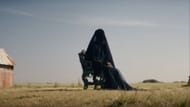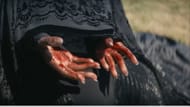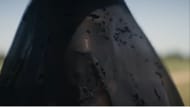The Woman in the Yard isn't just another ghost story. When I watched The Woman in the Yard, I didn’t flinch at jump scares or shadows moving across the walls. Instead, I was struck by the emotional stillness that surrounded Ramona. The veiled figure haunting her didn’t feel like a monster. She felt like a memory, lingering, waiting, unresolved.
Disclaimer: This article reflects the writer's opinion.
While some may see the film as a slow-burn thriller wrapped in mystery, I saw it as an emotional excavation, exposing what Ramona tried to bury beneath routine, silence, and denial. Ramona’s descent into paranoia wasn’t fear-based in the traditional horror sense.
It was the terror of not being able to escape your own mind, of confronting the weight she had carried so long that it became a part of her.
In The Woman in the Yard, grief is the unseen antagonist, always present, sometimes visible, but never loud. Watching Ramona unravel didn’t feel like watching a ghost story, it felt like watching a woman cornered by her own unspoken pain. It wasn't horror that followed me after the credits. It was the lingering image of sorrow that refused to be silenced.
The Woman in the Yard isn't about ghosts, it's about guilt

What struck me most about The Woman in the Yard was its stillness. Director Jaume Collet-Serra uses silence and space like weapons, but instead of creating suspense, they evoke loneliness. Ramona, played with haunting precision by Danielle Deadwyler, moves through her days like someone trying not to shatter.
Her paranoia builds not because she fears the woman outside, but because she knows her. She’s met her before, in dreams, in breakdowns, in moments when the grief bubbled too close to the surface. Ramona’s husband is gone. Her past is a minefield, and she tiptoes around. The veiled woman is not some outside threat breaking in, but a buried truth she’s refused to let surface.
That truth is layered with guilt: over surviving, over lying to her children about the crash, and possibly even over wishing to escape her life. The veiled figure represents this inner torment, appearing only after Ramona begins praying not for healing, but for the strength to end her own life. “Today’s the day,” the woman repeats, a haunting echo of that internal plea.
The Woman in the Yard captures what it means to live with invisible wounds

Grief doesn’t scream, it whispers. And that’s what makes The Woman in the Yard so quietly horrifying. There’s no villain to vanquish, only a version of yourself to confront. The veiled woman becomes a personification of Ramona’s fractured psyche, a manifestation of trauma and su*cid*l ideation. Her appearance coincides with electrical outages, dead phones, and a house already unraveling under the pressure of absence.
The film smartly uses daylight and open space to trap its characters. It’s not the dark that makes Ramona afraid, it’s what’s waiting in the light. When her son Tay challenges her to explain what’s happening, we see Ramona falter. Her lies, especially about who was driving the car, pile onto her growing burden.
In one gutting moment, we learn that Ramona may have caused the crash intentionally, and the woman’s presence is no longer symbolic but accusatory. Blood on the woman’s hands echoes that crushing revelation.
Letting go isn’t an exorcism, it’s a surrender

By the final act of The Woman in the Yard, the horror doesn’t climax with gore or a scream. Instead, it comes in the form of Ramona’s surrender. The veiled woman guides her to the rifle, gently encouraging her toward a fatal decision. But just when we expect the sound of a gunshot, the film veers into a surreal calm: the children return, the dog reappears, the woman is gone.
Yet this ending feels too perfect. The painting in the house, featuring Ramona’s and the woman’s faces together, her name spelled backward, hints that we may be in a dream or, worse, a death state. The sign reading “Iris Haven,” a reference to her husband’s memory, now stands physically outside the home. It was never there before.
Whether Ramona truly survived or not remains ambiguous. But what feels certain is that she faced the darkest part of herself. The Woman in the Yard doesn't offer catharsis: it offers a mirror. And sometimes, the most terrifying thing isn’t the figure on your lawn, it’s the reflection of your grief staring right back at you.
The Woman in the Yard is available to watch on Prime Video and Apple TV in selected regions.
